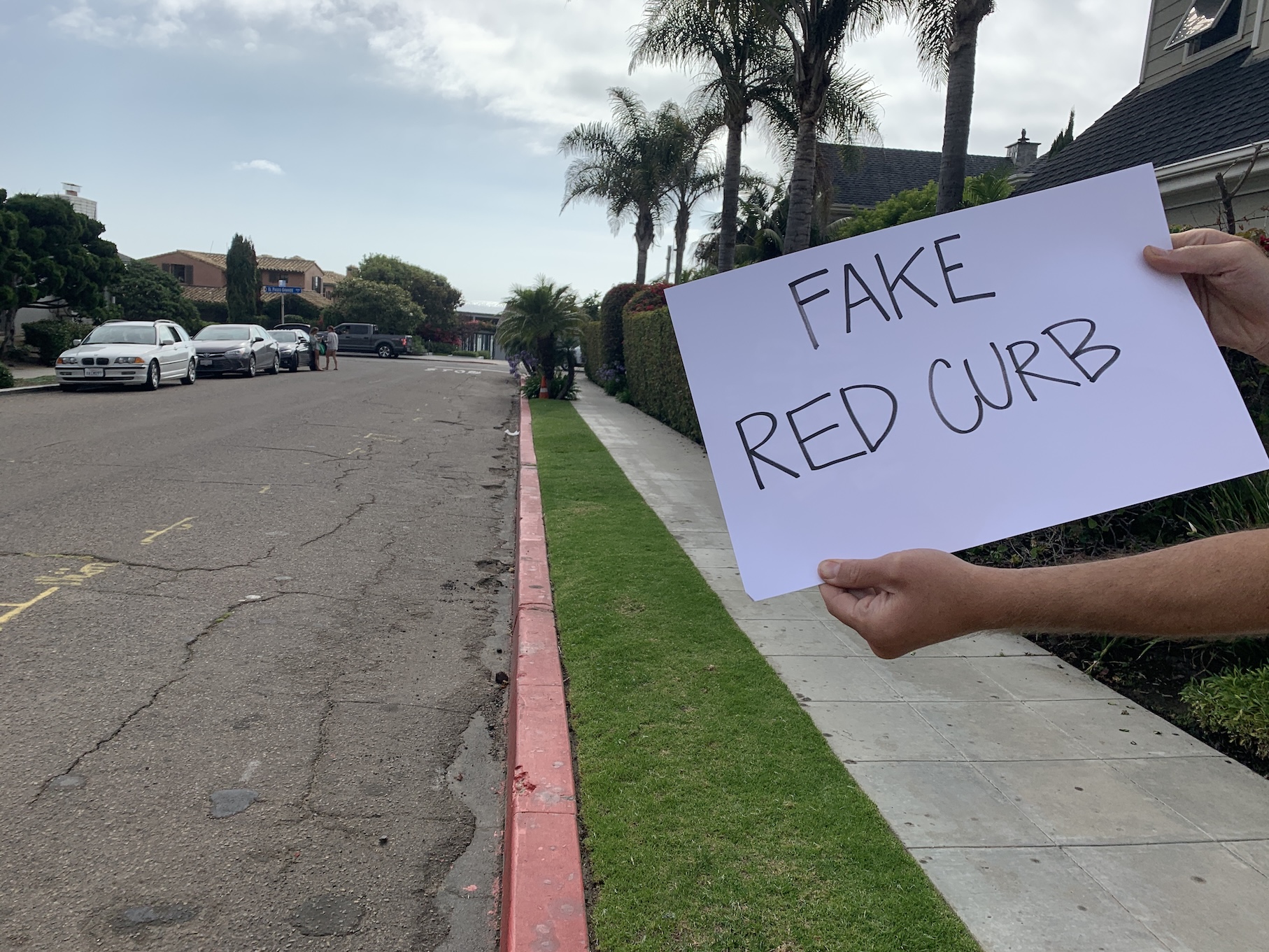
First of all, don’t curb your enthusiasm — parking is critical to equitable coastal access. Investigating a suspected illegal red curb can be a little tricky, but here’s what you can do about it today:
- Check out the curb on google street view and click the clock icon in the top left corner of the screen. By sliding the timeline, you can see whether or not the curb was recently converted to red. A curb that has recently changed color is probably more cause for suspicion.

A curb in La Jolla that has been painted red over time, screenshots taken from Google Street View
2. Look for local signage. Are there ‘No parking anytime’ signs? Are there street sweeping signs? Legal curbs are more likely to have related signage.
3. Check out the City of San Diego’s ‘Get it Done’ website, where you can report issues related to curbs, see what others have reported, and find more city information about curb zoning.
4. Still think you’re onto something? Email our Beach Preservation committee at beachpres@sandiego.surfrider.org and we’ll personally look into it. Please note that we can only help research areas that serve as parking for local beach/coastal access. Surfrider does not take positions on parking issues outside of those that serve as coastal access.
Currently, the City of San Diego gets about 200 red curb reports per year and tries to respond to them within 90 days — which is most of the winter, three good swells, or however you want to see it. Surfrider is interested in speeding this timeline up, so we’re pushing the City to create an inventory of the red curbs in San Diego.
The recommendation for a red curb inventory initially came from a 2019 audit of the City of San Diego’s Transportation Department. The audit determined that such a digital log would streamline the city’s process for handling curb reports, which involves manually checking for relevant permits across different departments in response to complaints. An inventory would make this process more efficient and get the public involved by allowing them to see in real time what color curbs are supposed to be.
If you’ve been following along, you know that Surfrider has a history of getting involved when a red curb shows up out of the blue with a shoddy coat of off-color paint.
Earlier this summer, every major news outlet in San Diego hit us up to talk about the red curb bandit, an anonymous vandal we called out for illegally painting a large stretch of curb in La Jolla Shores red. The bandit eliminated nine spaces of public parking near the Shores in the middle of summer, and you can bet our network was upset about the impact to beach access.
We rallied hard on social media, we got the California Coastal Commission’s staff and Councilwoman Barbara Bry’s office to call the right reps at the City of San Diego, and within two weeks of us receiving a hot tip about suspected illegal red curbs, most of the curbage on Camino del Collado was painted back to gray. Nobody came out to defend what appeared to be a homeowner’s flagrant act of entitlement, and we celebrated solid work all around with a surf session in La Jolla.
Coastal access battles are rarely so easily won, though. Surfrider fights daily for equitable beach access and our opponents are typically loud, lawyered, and lobbied. Parking in particular can get prickly.
We experienced much more opposition last year, when we joined forces with La Jolla community activist Melinda Merryweather, who noticed a dramatic expansion of red curbs in the neighborhood above Black’s Beach over the past twenty years. When we exposed 11 red curbed spaces as inconsistent with existing permits (AKA illegal), homeowners still vehemently opposed restoring the spaces back to gray. We ultimately prevailed and the spaces were painted back, but the victory took over two years to achieve and beach access from the neighborhood is still very limited.
So having fought long and hard over red curbs, this is where we sit with them today — we respect that parking decisions require many local voices, and we hope that our coastal defenders use their voice to defend parking as an avenue for coastal access.
